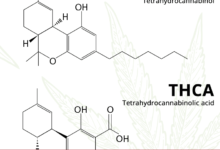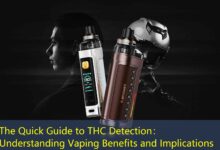1. Introduction to Delta 10
Delta 10 tetrahydrocannabinol (Delta 10 THC) is one of the many cannabinoids derived from the cannabis plant. While most people are familiar with Delta 9 THC, which is responsible for the psychoactive effects commonly associated with marijuana, Delta 10 offers a different experience. Notably, Delta 10 THC is believed to provide a more clear-headed and less paranoid high than its more well-known counterpart. In this guide, we will delve deep into what Delta 10 is, how it interacts with the body, its effects, and how to use it safely.
2. What Is Delta 10 THC?
Delta 10 THC is a cannabinoid that occurs in trace amounts in marijuana. Like other cannabinoids, it interacts with the endocannabinoid system (ECS), which plays a crucial role in regulating various physiological processes, including mood, memory, and pain perception. Delta 10 is derived from cannabis sativa and is created when Delta 9 THC undergoes a transformation process—often due to the application of heat and UV light. This transformation results in the formation of this new cannabinoid, which offers unique effects.
3. The Chemical Structure of Delta 10
Delta 10 THC has a similar chemical structure to Delta 9 THC, which makes it a member of the THC family. The primary difference lies in the placement of a double bond within the carbon chain. In Delta 10, the double bond is found on the 10th carbon atom, whereas in Delta 9 its position is on the 9th carbon atom. This subtle difference in structure significantly influences how Delta 10 interacts with the body’s cannabinoid receptors, potentially leading to different effects and experiences for users.
4. Effects of Delta 10 THC
Users of Delta 10 report several effects that differentiate it from Delta 9 THC. Generally, Delta 10 is associated with a more uplifting and euphoric high without the heightened anxiety that can often accompany Delta 9 use. Users describe the experience as providing clarity, creativity, and energy. Due to these effects, Delta 10 is often favored by those who seek a functional high, allowing them to perform daily tasks without feeling overly sedated or paranoid.
5. Methods of Consumption

Delta 10 THC can be consumed in various ways, similar to other cannabinoids. Common methods of consumption include vaporization, tinctures, edibles, and cartridges. Each method has its specific onset time and duration of effects. For instance, vaporization tends to provide quicker effects, typically within minutes, while edibles may take longer and provide a more prolonged experience. It’s essential for users to choose their preferred method based on their desired effect and experience level, keeping in mind that the dosage may need to be adjusted accordingly.
6. Dosage and Recommendations
As with any cannabinoid, finding the right dosage of Delta 10 THC is crucial for an enjoyable experience. Beginners are advised to start with a low dose, typically ranging from 5 to 10 mg, and observe how their body reacts before gradually increasing the dose. It’s also important to note that individual tolerance can vary widely, and factors such as body weight, metabolism, and previous cannabis use can all play a role in determining the optimal dose. Always consult with a healthcare provider if you are unsure about the appropriate dosage for your needs.
7. Legal Status of Delta 10 THC
The legal status of Delta 10 THC can vary depending on the location. In the United States, Delta 10 sits in a gray area of legality. If the Delta 10 is derived from hemp and contains less than 0.3% Delta 9 THC, it is often considered legal under the 2018 Farm Bill. However, some states have enacted laws explicitly targeting Delta 10 and other cannabinoids. Thus, it is crucial for consumers to understand their local laws regarding the purchase and use of Delta 10 products.
8. Safety and Side Effects
While many users report positive experiences with Delta 10 THC, it’s essential to be aware of possible side effects. These can include dry mouth, red eyes, dizziness, and, in some cases, anxiety. To mitigate these effects, users should stay hydrated and be in a comfortable environment when consuming Delta 10. If any negative effects occur, it is best to reduce the dosage or discontinue use altogether. Always be cautious when trying a new cannabinoid, especially if you have a history of anxiety or other mental health conditions.
9. Delta 10 vs. Other Cannabinoids
When comparing Delta 10 THC with other cannabinoids like Delta 9 THC and CBD, it is essential to consider the differences in their effects. Delta 9 THC is well-known for its psychoactive effects, often leading to euphoria and relaxation, but can also cause anxiety for some users. In contrast, CBD does not produce a high and is typically used for its potential therapeutic properties. Delta 10 THC, on the other hand, is positioned as a middle ground, offering a moderate high with more upbeat and stimulating effects, making it attractive for users looking for a functional cannabinoid.
10. Frequently Asked Questions
What should I expect when trying Delta 10 THC for the first time?
When trying Delta 10 THC for the first time, you can expect a stimulating and uplifting experience, often described as clear-headed and less anxiety-inducing than Delta 9. Begin with a low dose to assess your tolerance, and stay in a comfortable environment to monitor how you feel.
Is Delta 10 THC legal everywhere?
No, the legal status of Delta 10 THC varies from place to place. It’s generally considered legal if it is derived from hemp and contains less than 0.3% Delta 9 THC, but some states have specific regulations regarding its sale and use. Always check local laws before purchasing Delta 10 products.
Can I experience negative side effects from Delta 10 THC?
Yes, while many users report positive effects, Delta 10 THC can also lead to side effects such as dry mouth, red eyes, dizziness, and sometimes anxiety. It’s crucial to start with a low dose and ensure you’re in a safe and comfortable setting to minimize any adverse effects.







